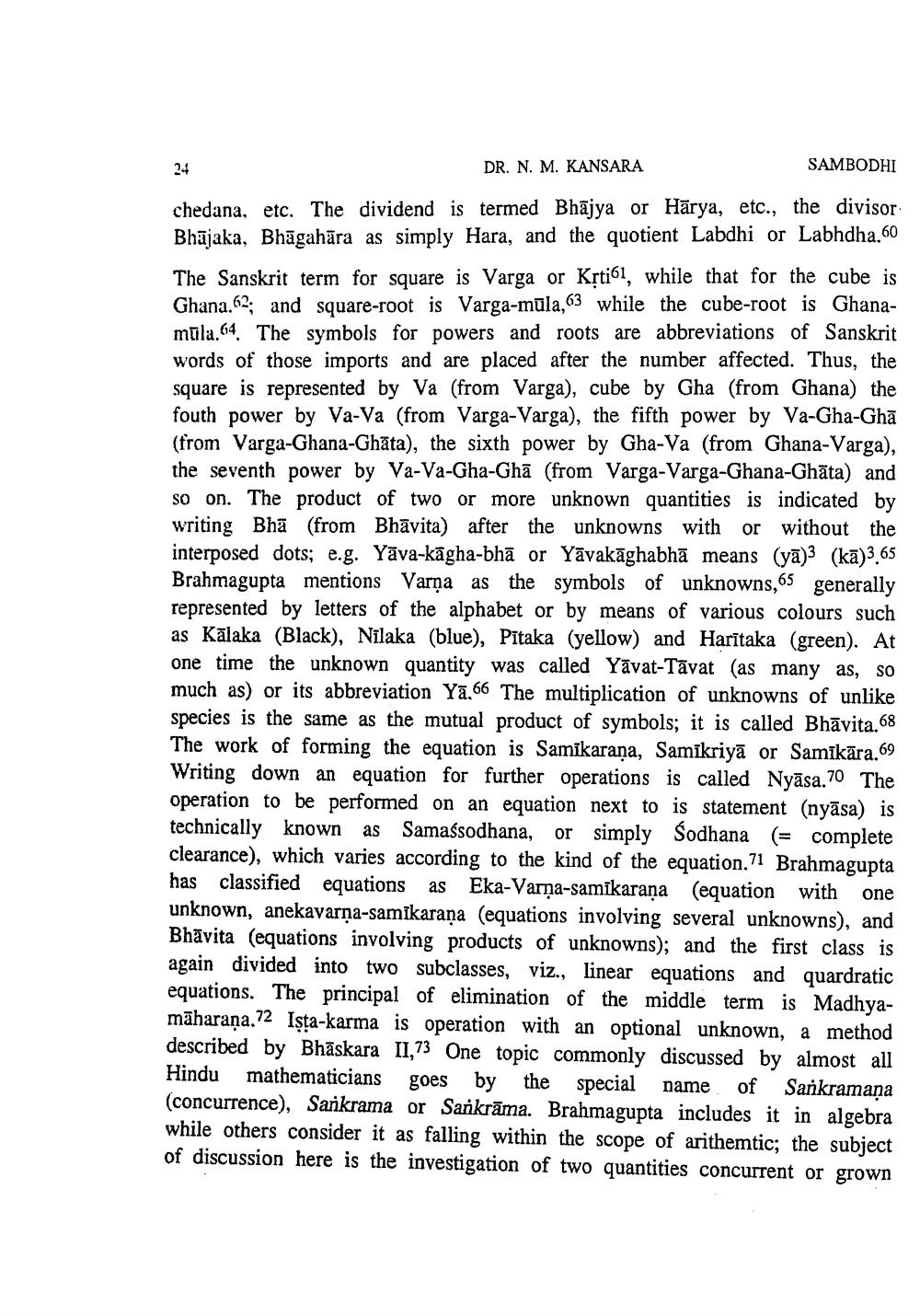________________
DR. N. M. KANSARA
SAMBODHI
chedana, etc. The dividend is termed Bhājya or Hārya, etc., the divisor Bhājaka, Bhāgahāra as simply Hara, and the quotient Labdhi or Labhdha.60
The Sanskrit term for square is Varga or Krtil, while that for the cube is Ghana.62; and square-root is Varga-mula,63 while the cube-root is Ghanamula.64. The symbols for powers and roots are abbreviations of Sanskrit words of those imports and are placed after the number affected. Thus, the square is represented by Va (from Varga), cube by Gha (from Ghana) the fouth power by Va-Va (from Varga-Varga), the fifth power by Va-Gha-Ghā (from Varga-Ghana-Ghāta), the sixth power by Gha-Va (from Ghana-Varga), the seventh power by Va-Va-Gha-Ghā (from Varga-Varga-Ghana-Ghāta) and so on. The product of two or more unknown quantities is indicated by writing Bhā (from Bhāvita) after the unknowns with or without the interposed dots; e.g. Yāva-kāgha-bhā or Yāvakāghabhā means (yā)3 (kā)3.65 Brahmagupta mentions Varna as the symbols of unknowns,65 generally represented by letters of the alphabet or by means of various colours such as Kālaka (Black), Nīlaka (blue), Pītaka (yellow) and Harītaka (green). At one time the unknown quantity was called Yāvat-Tavat (as many as, SO much as) or its abbreviation Yā.66 The multiplication of unknowns of unlike species is the same as the mutual product of symbols; it is called Bhāvita. 68 The work of forming the equation is Samîkarana, Samīkriyā or Samīkāra.69 Writing down an equation for further operations is called Nyāsa.70 The operation to be performed on an equation next to is statement (nyāsa) is technically known as Samassodhana, or simply Sodhana (= complete clearance), which varies according to the kind of the equation.71 Brahmagupta has classified equations as Eka-Varna-samikarana (equation with one unknown, anekavarņa-samikarana (equations involving several unknowns), and Bhāvita (equations involving products of unknowns); and the first class is again divided into two subclasses, viz., linear equations and quardratic equations. The principal of elimination of the middle term is Madhyamāharaṇa.72 Ista-karma is operation with an optional unknown, a method described by Bhāskara 11,73 One topic commonly discussed by almost all Hindu mathematicians goes by the special name of Sankramana (concurrence), Sankrama or Sankrāma. Brahmagupta includes it in algebra while others consider it as falling within the scope of arithemtic; the subject of discussion here is the investigation of two quantities concurrent or grown




